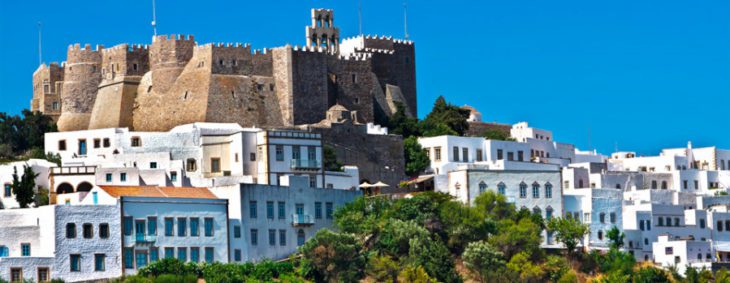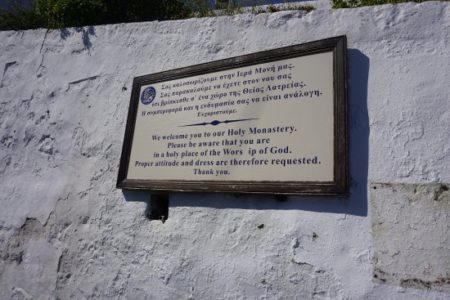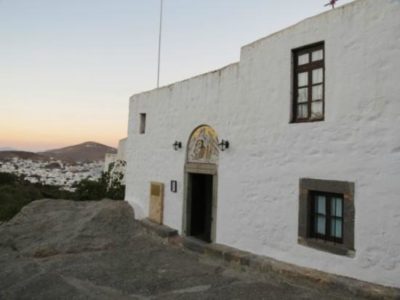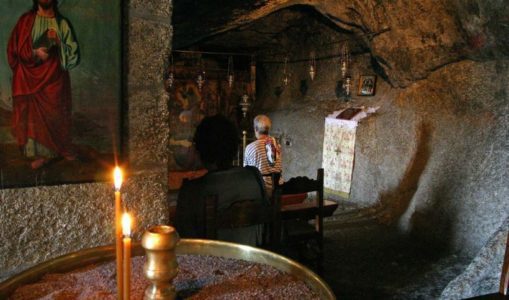Hora and the Holy Cave of Apocalypse
Hora town along with the Byzantine Monastery of St. John and the holy Cave of the Apocalypse is among the most important places for many religions. They are places of deep spirituality that must be visited with deep respect. Although in summer it is very hot, take a scarf to cover your shoulders and keep your knees covered. Hora is located 4 km from the port of Skala and it is the capital of the island of Patmos; it is also a historical and cultural heritage of UNESCO.
Built in Cycladic style with houses interspersed with small courtyards, galleries and narrow alleys all enclosed by medieval fortress which coincides with the imposing Monastery of St. John. This town is many times been referred to as the queen of all Hora’s for the Byzantine residences that are unique to the island; it is also said to be the strongest built in the Aegean. Whitewashed houses, mansions, captain’s residences, narrow streets and alleyways, all of which date back to the 15th century. These are one of the reasons why this Hora is evidently one of the most expensive areas in Europe. Bought out mainly by foreigners the houses in Hora are in high demand.
On Platia Xantou is folklore museum located in Simantiris house, the home of a wealthy merchant of Patmos built in 1596 furnished with objects from all around the world. The monastery of Zoodochos Pigi is located near the Monastery of St. John, and was founded in 1607. There are two chapels inside the monastery: the first is dedicated to St. John and the second to the Virgin Mary, which also houses a miraculous image. Convent of Evangelismos, however, is outside the city walls, the nuns of the Convent obey very strict rules and the monastery is open to the public only a few hours a day.
The Monastery
Majestic monastery of Saint John is one of the most outstanding architectural wonders of the Aegean. It was founded in 1088 by Ossios Christodoulos following a grant by the Byzantine Emperor Alexios I. Komnenos. Monumental entrance to the Monastery extends north of the fort, overlooking a courtyard paved with cobblestones. Wonderful iconostasis, carved in wood and covered in gold is just one of the exceptional items that you can admire here. The Orthodox Church does not allow more than one ceremony per alter, per day so the monastery has 10 chapels, three of them are outside the boundaries.
Beautiful mosaics and frescoes as the extraordinary Virgin’s throne, the mosaic of the Good Shepherd, the Ayios Nicolaos and others that decorate the ceilings including one in the middle of the “Pantokrator”. The monastery of Patmos has also other functional rooms as the kitchen, canteen, tank and finally the buildings that house the monastic communities where it is not always possible the visit.
Ecclesiastical museum displays a collection of historic frescoes and icons, including a copy of the Apocalypse of the seventeenth century, many relics, and various religious objects, all in a strict Byzantine style and some paintings by El Greco.Very interesting is the historic library of the monastery, one of the richest in Greece, which has more than 900 manuscripts, some of which in ancient parchment and 13,000 printed volumes.
Cave of Apocalysse
Down the road of pine and eucalyptus trees between Hora and Skala is the Holy Cave of the Apocalypse. 40 steps lead to four meters deep where St. John gave his disciples the 13 chapters of Revelation. Inside the cave, on the side of the iconostasis, are still visible in places where the Saint John was holding the head and the split in three parts of the rock, a symbol of the Trinity. From here the Holy heard the voice of God.
Inside the cave there is the chapel of Santa Anna built by the founder of the monastery 1000 years later. Behind the cave is the famous seminary, known as the Patmiada school, founded by Makarios Kalogeras in 1733. This school has featured some of the most famous members of the “Filiki Eteria”, an underground organization of secret society that brought a major contribution to the renaissance Greek.







